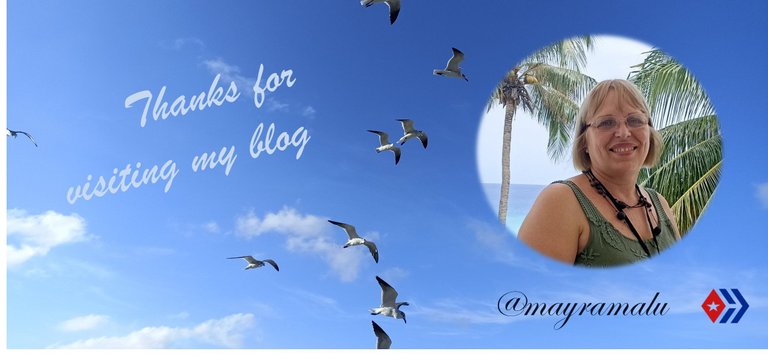
Hello, friends, as every Wednesday, I'm pleased to join our friend @tattoodjay's challenge to share with you a walk that completely warmed my soul. It's a hidden gem in the heart of Havana: the Quinta de los Molinos Botanical Garden. I confess that sometimes, living in the city, we forget these havens of peace exist, and visiting it was like finding a small treasure.
Imagine a space of almost five hectares, a true green lung in the center of the capital. As you enter, the noise of the city fades away, and all you can hear is the birdsong. It is, without a doubt, a charming place.
Upon arrival, we were greeted by a guide who explained that Cuba's first Botanical Garden was created in 1817 with the aim of studying plants of interest to the Spanish Crown. It was located on the grounds now occupied by the Capitol, then moved to this site in 1839 and was run by the University of Havana.







While walking through it, I was struck by the ponds filled with beautiful orange carp. But what truly moved me were the lotus flowers. How beautiful! There were flowers of various colors: white, blue, and purple, adorning the surface of the water. I stayed there for a long time, simply observing them.









This garden is of great ecological importance. I learned that a great diversity of species coexist within its areas, including 14 types of plants that are endemic to Cuba, meaning they only grow here on the island. It is also home to more than 76 species of animals, from birds and reptiles to small mammals and fish.
It is wonderful to know that it is also a vital refuge for migratory birds that, after crossing the Straits of Florida, find a safe place here to rest and recharge.
What I liked most was knowing that the Garden is a cultural and educational center serving the surrounding communities. I learned that they hold workshops and activities for children, instilling a love of nature and environmental education through games and contests.




Without a doubt, the biggest surprise of my visit was coming across a very unusual tree: the famous "Cannonball Tree." From afar, you can see large, round fruits hanging from its trunk. It is so tall that it can reach between 15 and 23 meters in height and is native to the tropical rainforests of South America.
Its fruits can measure between 20 and 25 centimeters in diameter and are extremely heavy. The guide explained that when they ripen, they fall and explode upon hitting the ground with a loud noise. He advised us not to walk under its branches, as a falling fruit could be very dangerous. I was able to observe its flowers, which are exotic and beautiful, although their height makes them difficult to appreciate in photos.




The walk in general is a pleasure. There are leafy trees that provide shade for almost the entire trail, and plenty of benches to sit and rest, read, or simply contemplate the surroundings. In fact, I saw a group of students gathered, taking advantage of the quiet and welcoming atmosphere to study. It's a place that invites you to linger and disconnect from the stress of life.
If you ever have the opportunity to visit Havana, or if you live here and haven't yet, I wholeheartedly recommend it.

See you soon!

VERSIÓN EN ESPAÑOL
Visitando el Jardín Botánico más antiguo de Cuba
¡Hola, amigos como cada miércoles me complace unirme al reto de nuestro amigo @tattoodjay para compartir con ustedes un paseo que me reconfortó el alma por completo. Se trata de una joya escondida en el corazón de La Habana: el Jardín Botánico de la Quinta de los Molinos. Les confieso que a veces, viviendo en la ciudad, olvidamos que existen estos remansos de paz, y visitarlo fue como encontrar un pequeño tesoro.
Imagínense un espacio de casi cinco hectáreas, un auténtico pulmón verde en el centro de la capital. Al cruzar su entrada, el ruido de la ciudad se desvanece, solo se escucha el canto de las aves. Es, sin duda, un sitio encantador.
Al llegar nos atendió un guía que nos explicó que el primer Jardín Botánico de Cuba fue creado en 1817 con el objetivo de estudiar las plantas de interés para la Corona Española. Estaba ubicado en los terrenos que hoy ocupa el Capitolio, luego en 1839 fue trasladado a este sitio y estuvo a cargo de la Universidad de La Habana.
Al recorrerlo me llamaron la atención los estanques con carpas de un bello color naranja. Pero lo que realmente me conmovió fueron las flores de loto. ¡Qué belleza! Había flores de varios colores: blancas, azules y moradas, adornando la superficie del agua. Me quedé un buen rato allí, simplemente observándolas.
Este jardín tiene una gran importancia ecológica. Supe que en sus áreas conviven una gran diversidad de especies, incluyendo 14 tipos de plantas que son endémicas de Cuba, es decir, que solo crecen aquí en la isla. Además, es hogar de más de 76 especies de animales, desde aves y reptiles hasta pequeños mamíferos y peces.
Es maravilloso saber que es también un refugio vital para las aves migratorias que, tras cruzar el estrecho de la Florida, encuentran aquí un lugar seguro para descansar y reponer fuerzas.
Lo que más me gustó, es saber que el Jardín es un centro cultural y educativo, que sirve a las comunidades de su alrededor. Me enteré de que realizan talleres y actividades para los niños, inculcándoles el amor por la naturaleza y la educación ambiental a través de juegos y concursos.
Sin duda, la sorpresa más grande de mi visita fue encontrarme con un árbol muy curioso: el famoso “Árbol Bala de Cañón”. Desde lejos, se pueden ver unos frutos grandes y redondos colgando de su tronco. Es tan alto que puede alcanzar entre 15 y 23 metros de altura, y es originario de las selvas tropicales de Suramérica.
Sus frutos pueden medir entre 20 y 25 centímetros de diámetro, y son extremadamente pesados. El guía nos explicó, que cuando maduran, caen y explotan al golpear el suelo haciendo un ruido fuerte. Nos aconsejó que no se debe caminar bajo sus ramas, ya que la caída de uno de esos frutos podría ser muy peligrosa. Pude observar sus flores, que son exóticas y hermosas, aunque su altura hace que sea difícil apreciarlas bien en las fotos.
El recorrido en general es un placer. Hay árboles frondosos que te cubren con su sombra durante casi todo el camino, y bancos abundantes para sentarse a descansar, leer o simplemente contemplar el entorno. De hecho, pude ver a un grupo de estudiantes reunido, aprovechando la tranquilidad y el ambiente acogedor para estudiar. Es un lugar que invita a quedarse y a desconectar del estrés de la vida.
Si alguna vez tienen la oportunidad de visitar La Habana, o si viven aquí y aún no lo conocen, se lo recomiendo de todo corazón.
¡Hasta pronto!



Congratulations @mayramalu! Your post made the TravelFeed team happy so we have sent you our big smile. Keep up the good job. 😃
Thanks for using TravelFeed!
@for91days (TravelFeed team)
PS: Did you know that we have our own Hive frontend at TravelFeed.com? For your next travel post, log in to TravelFeed with Hive Keychain or Hivesigner and take advantage of our exclusive features for travel bloggers.
Thank you very much for the support 🤗
You can check out this post and your own profile on the map. Be part of the Worldmappin Community and join our Discord Channel to get in touch with other travelers, ask questions or just be updated on our latest features.
Thank you 🤗
Hey @mayramalu you are welcome.
Thanks for using @worldmappin 😘
Congratulations, your post has been added to the TravelFeed Map! 🎉🥳🌴
Did you know you have your own profile map?
And every post has their own map too!
Want to have your post on the map too?
- Go to TravelFeed Map
- Click the create pin button
- Drag the marker to where your post should be. Zoom in if needed or use the search bar (top right).
- Copy and paste the generated code in your post (any Hive frontend)
- Or login with Hive Keychain or Hivesigner and click "create post" to post to Hive directly from TravelFeed
- Congrats, your post is now on the map!
PS: You can import your previous Pinmapple posts to the TravelFeed map.Opt Out
Thank you very much 🤗
Amiga un lugar espectacular , un magnífico refugio verde en una de las zonas más céntricas y poblada de la ciudad. Sin duda el Árbol Bala de Cañón es una excentricidad, lo conocí justamente visitando ese precioso paraíso . Gracias por traerlo aquí con esas maravillosas fotos 😍❤️
Gracias amiga, yo lo visitaba de niña cuando mi mamá trabajaba en la Facultad de Agronomia que estaba ahí, jaja hace mucho tiempo, es un lugar encantador, me alegró ver que lo siguen cuidando. Abrazos 🤗
Congratulations @mayramalu! You have completed the following achievement on the Hive blockchain And have been rewarded with New badge(s)
Your next payout target is 6000 HP.
The unit is Hive Power equivalent because post and comment rewards can be split into HP and HBD
You can view your badges on your board and compare yourself to others in the Ranking
If you no longer want to receive notifications, reply to this comment with the word
STOPCheck out our last posts:
¡Hola!
Cuánto me alegra ver lo bien conservado que se mantiene este sitio. Hace años de mi última visita y ahora, al leerte, me han entrado deseos de retornar.
¡Gracias por este hermoso viaje!
Gracias amigo @roswelborges por tu lindo mensaje, a mi también me alegró verlo cuidado, es una joya que debemos mantener para el bien de todos. Saludos 🤗
¡Totalmente de acuerdo! Y por fortuna así se mantiene. ¡Gracias nuevamente!
¡Abrazos!
!Sloth
!MMB
!STRIDE
!HUG
!INDEED
!WEIRD
!BRAINDEAD
Hiya, @lauramica here, just swinging by to let you know that this post made it into our Honorable Mentions in Travel Digest #2707.
Your post has been manually curated by the @worldmappin team. If you like what we're doing, please drop by to check out all the rest of today's great posts and consider supporting other authors like yourself and us so we can keep the project going!
Become part of our travel community:
Hola @lauramica agradezco mucho la selección para el TD, es un honor! Gracias por el apoyo!
Gracias a vos por compartir tu post con nosotros ❤️
Hello dear friend @mayramalu, how are you?
What a lovely place you visited! I really like the pond and the reflections you photographed in it.
Beautiful shots. I appreciate you showing us this beautiful place.
Have a wonderful day.
Hello my friend @jlufer, this place give us beautiful sights of the nature, I'm glad you liked them. Thank you so much for your support. Best regards 🤗
Wow, it's really a beautiful botanical garden to visit! ❤️
Hello @silviabeneforti, I'm very happy you liked it, thanks so much for the message and support. Best regards 🤗
Me encanta ese lugar, gan lleno de vida, de paz. Un sitio ideal para pasar el dia, ir de picnic.
Me gustaron mucho tus fotos 🍃💚.
Saludos
Así es amiga, es un lugar maravilloso para descansar entre tan bella naturaleza, gracias por tu apoyo y lindas palabras. Abrazos 🤗
What amazing garden with great history. This is no doubt a really amazing gems . Thanks for sharing this wonderful pictures. It really warm my heart mere looking at them. Do have a wonderful day.
Hello friend, I'm glad you enjoyed visiting this botanical garden. Thank you for your kind message. Best regards